

This exercise focuses on the important operation of De-ballasting cargo tanks, which is typically carried out simultaneously with the Cargo Loading operation. According to the latest regulations, the treated ballast water must be neutralized before being transferred from the ballast tanks to the sea. Therefore, this exercise involves using the Ballast Water Treatment System (BWTS) and understanding the procedure to make it operational.
The primary goal of this exercise is for the user to understand the potential challenges and issues that can arise when operating the ballast water treatment system. Additionally, users will learn the correct setup procedures for the BWTS.
By the end of this exercise, participants should be able to:
This exercise will equip participants with the skills needed to execute de-ballasting operations using BWTS efficiently, while emphasizing safety, regulatory compliance, and environmental stewardship.
After starting or resuming the ballasting, the user should not open any non-required valves or close any required valves. If this happens, a caution message will appear, instructing the user to undo the previous action. If the user fails to correct the action, the exercise will be terminated.
After starting or resuming the ballasting operation, the user must maintain the list and trim angle below 1.5°. If the angle exceeds 1.5°, a low-priority message will be displayed, instructing the user to reduce the angle. If the angle is not corrected, the message will escalate to a high-priority alarm, and the exercise will be terminated within 5 minutes unless the angle is brought back below 1.5°.
| Alarm Condition | Alarm Time | Alarm Level | Alarm Title | Alarm Description | Action |
| remark | Return The BWTS To Recirculation Mode | Return to recirculation and start the stripping of ballast tanks. | |||
| remark | Neutralization Unit Pump NPU-100 Abnormal | The Neutralization Unit Pump NPU 100 is abnormal. Reset the NPU 100 pump and return the system to sea to sea after acknowledging the alarm in BWTS panel. | Acknowledge the alarm in BWTS Panel, return the system to recirculation and reset the NPU | ||
| remark | Neutralization Unit Pump NPU-101 Abnormal | The Neutralization Unit Pump NPU 101 is abnormal. Reset the NPU 101 pump and return the system to sea to sea after acknowledging the alarm in BWTS panel. | Acknowledge the alarm in BWTS Panel, return the system to recirculation and reset the NPU | ||
| remark | Valve BA008F Not Closing | Reset and close valve BA008F after acknowledging the alarm in BWTS panel. | Acknowledge the alarm in BWTS Panel, reset the valve and close the valve | ||
| remark | Valve BA004F Not Closing | Reset and close valve BA004F after acknowledging the alarm in BWTS panel. | Acknowledge the alarm in BWTS Panel, reset the valve and close the valve | ||
| Low priority | High Trim Difference between port and stbd | High trim differences adjust tank filling valves accordingly. | |||
| caution | Deviation Detected | Deviation from the exercise is detected, undo your last action. |
Step By Step Procedure
During the ballasting operation, we will be filling tanks 2(P), 2(S), 4(P), and 4(S).
Open the following tank filling valves:




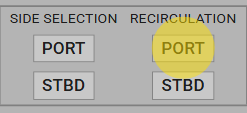

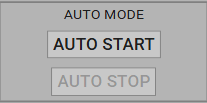
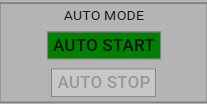
After successfully running the system in recirculation:
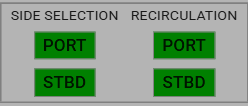
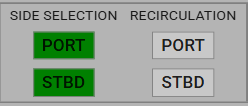
During the first 3 minutes, maintain a low of 950 – 1050 m³/h.
After 3 minutes, you will receive an alert to increase the pump flow rate.

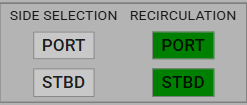

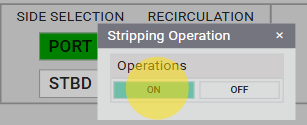
Drain the tanks to below 2% of their volume, then stop the stripping pump (Bilge Pump and Fire & GS Pump).